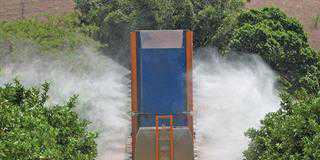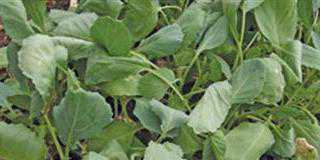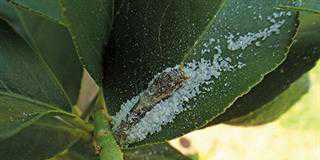
Scientific name: Gryllotalpa africana (the most widespread species in Southern Africa).
Family: Gryllotalpidae
Distribution: Africa, Asia, Europe, Australia and the Americas.
Description
The mole cricket lives underground in burrows up to 1m deep, and gnaws at a plant’s roots and basal parts, affecting the plant’s growth and threatening its survival. One of the surest signs of a mole cricket is sudden reduced vigour in an otherwise healthy plant. Frequently, by the time the damage is detected, it is too late and the cricket has moved on to the next plant.
Appearance and habits
An adult mole cricket has a plump body with short antennae and is 24mm to 35mm in length. The upper surface is brownish-yellow. It uses its large, shovel-like front legs to dig its burrow. Males produce a continuous chirping from deep within the burrow. Mating takes place underground, where the female excavates a chamber and lays upwards of 200 eggs. Incubation takes about 12 days.
For the first two or three weeks, the nymphs remain in the nest chamber, protected by the female. Nymphs can take up to two years to reach the adult stage, depending on the micro-climate.
Serious threat to crops
Mole crickets prefer moist or waterlogged soil. This makes crops highly attractive to them – there is plenty of food and the soil is well-irrigated. Crops affected include potatoes, sugar beet, barley, wheat, maize, oats, beans and strawberries. Mole crickets also damage young fruit trees and are partial to seedlings. They attack grass, which results in large dead patches, and are a serious pest for turf growers.
Control measures
Chemical
Due to the cricket’s burrowing habits, and the depth it reaches, deploying insecticides can be difficult. In some urban environments, products containing Bifenthring G (a pyrethroid-derived insecticide) can be used. Do not apply it near water, though, as it is highly toxic to aquatic life, even in small concentrations. It is also harmful to bees.
Natural predators
Ants destroy mole crickets’ eggs, while predatory nematodes, shrews and nocturnal mammals consume adults when they surface. A number of wasps from the genus Larra are also parasitoids of mole crickets.
Other methods
Deep ploughing can be used to expose the crickets to natural predators, poisoned bait and soil fumigation.
Flooding can control both adults and eggs, while periods of drought will kill them off.
This series is intended primarily as a guide to identifying pests. The control methods discussed are merely suggestions. For help with area- or crop-specific measures, consult your agricultural extension officer.
Paul Donovan is a Botswana-based entomologist.













